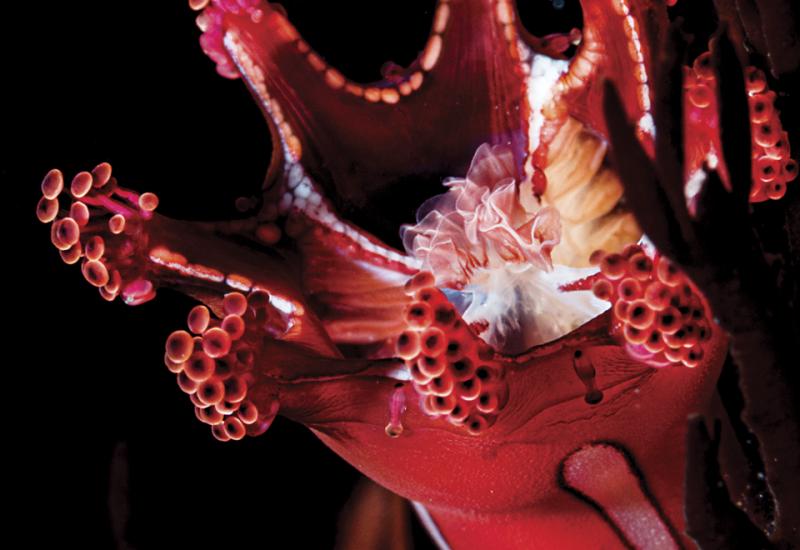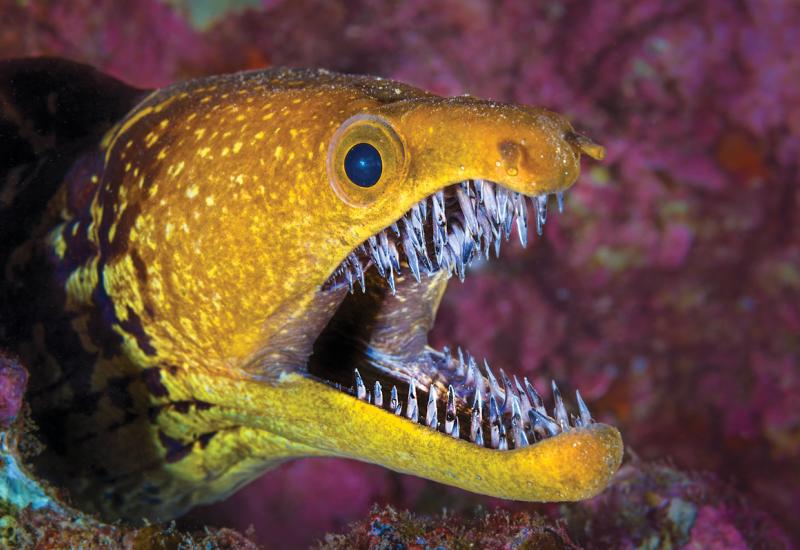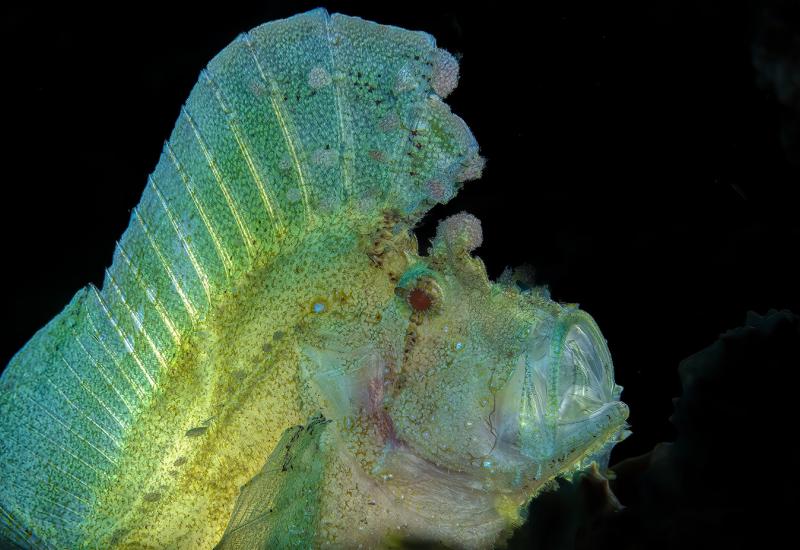Diving with Schools of Barracuda
One of the most recognizable fish that divers encounter throughout the world’s oceans is the barracuda. Its pike-shaped body and gaping, toothy mouth give it away immediately. The fish can prove surprisingly docile despite its appearance, often hovering casually in the shade of a dive boat or alongside a coral head.
There are actually more than two dozen species of barracuda, and they range widely in size. The great barracuda — a common sight in the Caribbean — can grow to nearly 6 feet long. In the Indo-Pacifc, the yellowtail barracuda tops out at only 2 feet.
Most commonly, divers spot barracuda swimming alone or in small groups of five or six, but some species can form vast schools, especially when they’re still young, because schooling provides protection from larger predators. Few underwater encounters are more thrilling and sought after than swimming into a spiraling vortex of barracuda.
Barracuda schools can happen all over the world, especially in deepwater destinations like the seamounts of Mexico’s Baja Peninsula or the mid-Atlantic Azores islands. But the reliable barracuda tornadoes that captivate underwater photographers usually happen among a specific species: the chevron barracuda (Sphyraena genie — also called blacktail barracuda), which ranges across the Indo-Pacifc.
Chevron barracuda are easy to recognize, thanks to the pattern of V-shaped black bars that adorns the sides of their bodies. And while it’s possible to see these fish form their massive schools in spots from Ras Mohammed National Park in Egypt’s Red Sea to the seamounts of Papua New Guinea’s Kimbe Bay, there’s one place that is universally renowned for encounters with thousands-strong schools of barracuda: Sipadan Island of the Malaysian side of Borneo.
The Sipadan site called Barracuda Point starts along a sheer wall where gray reef sharks and bumphead parrotfish make regular appearances, eventually leading to an underwater plateau that is ground zero for huge shoals of barracuda in tornado-like formations. There are no guarantees in diving, but this site is frequently lauded for being a sure thing for divers seeking conglomerations of the barracuda kind.
Like underwater excitement? Discover where you can dive with mako sharks!
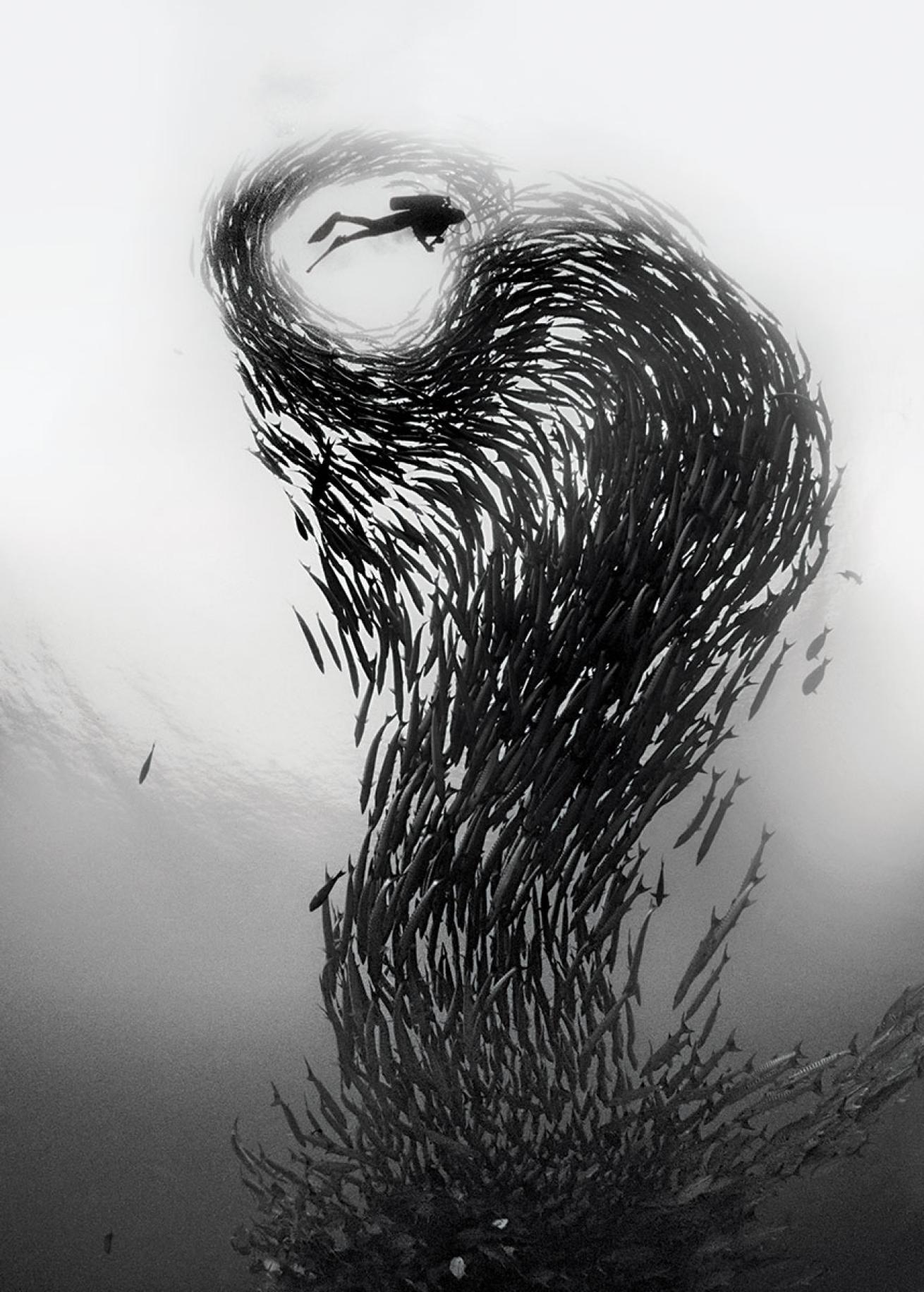
David Doubilet/National Geographic CreativeFAST FACTS
Max Length Up to about 6 feet
Max Weight Up to 110 pounds
Endangered Status Barracuda aren't in danger because most species have no commercial value.
Fun Fact Barracuda are attracted to lighted, shiny, or yellow objects or fish. This knowledge allows sport fishermen to catch them easily with a yellow or bright lure.
One of the most recognizable fish that divers encounter throughout the world’s oceans is the barracuda. Its pike-shaped body and gaping, toothy mouth give it away immediately. The fish can prove surprisingly docile despite its appearance, often hovering casually in the shade of a dive boat or alongside a coral head.
There are actually more than two dozen species of barracuda, and they range widely in size. The great barracuda — a common sight in the Caribbean — can grow to nearly 6 feet long. In the Indo-Pacifc, the yellowtail barracuda tops out at only 2 feet.
Most commonly, divers spot barracuda swimming alone or in small groups of five or six, but some species can form vast schools, especially when they’re still young, because schooling provides protection from larger predators. Few underwater encounters are more thrilling and sought after than swimming into a spiraling vortex of barracuda.
Barracuda schools can happen all over the world, especially in deepwater destinations like the seamounts of Mexico’s Baja Peninsula or the mid-Atlantic Azores islands. But the reliable barracuda tornadoes that captivate underwater photographers usually happen among a specific species: the chevron barracuda (Sphyraena genie — also called blacktail barracuda), which ranges across the Indo-Pacifc.
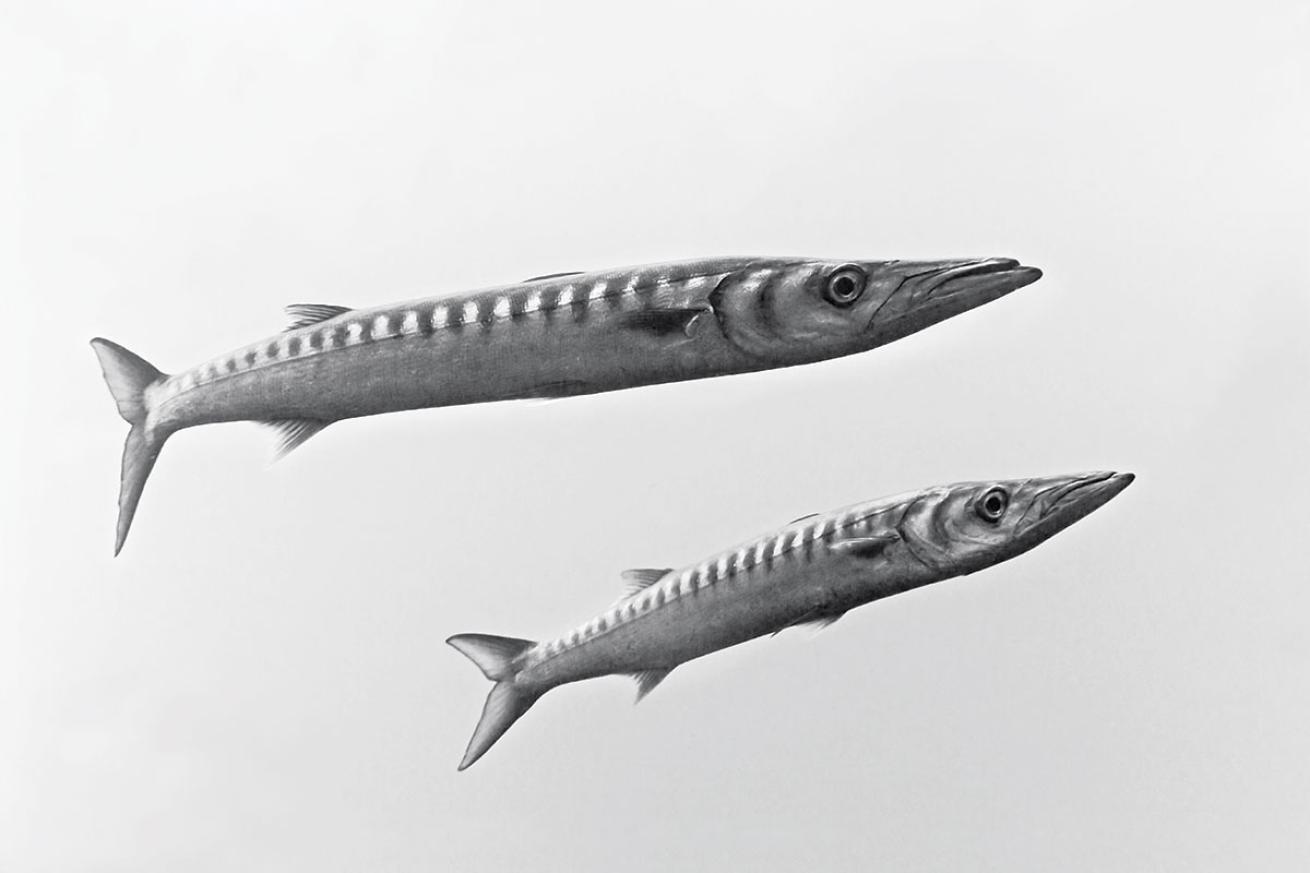
Enrico PatiChevron Barracuda
Chevron barracuda are easy to recognize, thanks to the pattern of V-shaped black bars on their sides.
Chevron barracuda are easy to recognize, thanks to the pattern of V-shaped black bars that adorns the sides of their bodies. And while it’s possible to see these fish form their massive schools in spots from Ras Mohammed National Park in Egypt’s Red Sea to the seamounts of Papua New Guinea’s Kimbe Bay, there’s one place that is universally renowned for encounters with thousands-strong schools of barracuda: Sipadan Island of the Malaysian side of Borneo.
The Sipadan site called Barracuda Point starts along a sheer wall where gray reef sharks and bumphead parrotfish make regular appearances, eventually leading to an underwater plateau that is ground zero for huge shoals of barracuda in tornado-like formations. There are no guarantees in diving, but this site is frequently lauded for being a sure thing for divers seeking conglomerations of the barracuda kind.
Like underwater excitement? Discover where you can dive with mako sharks!

